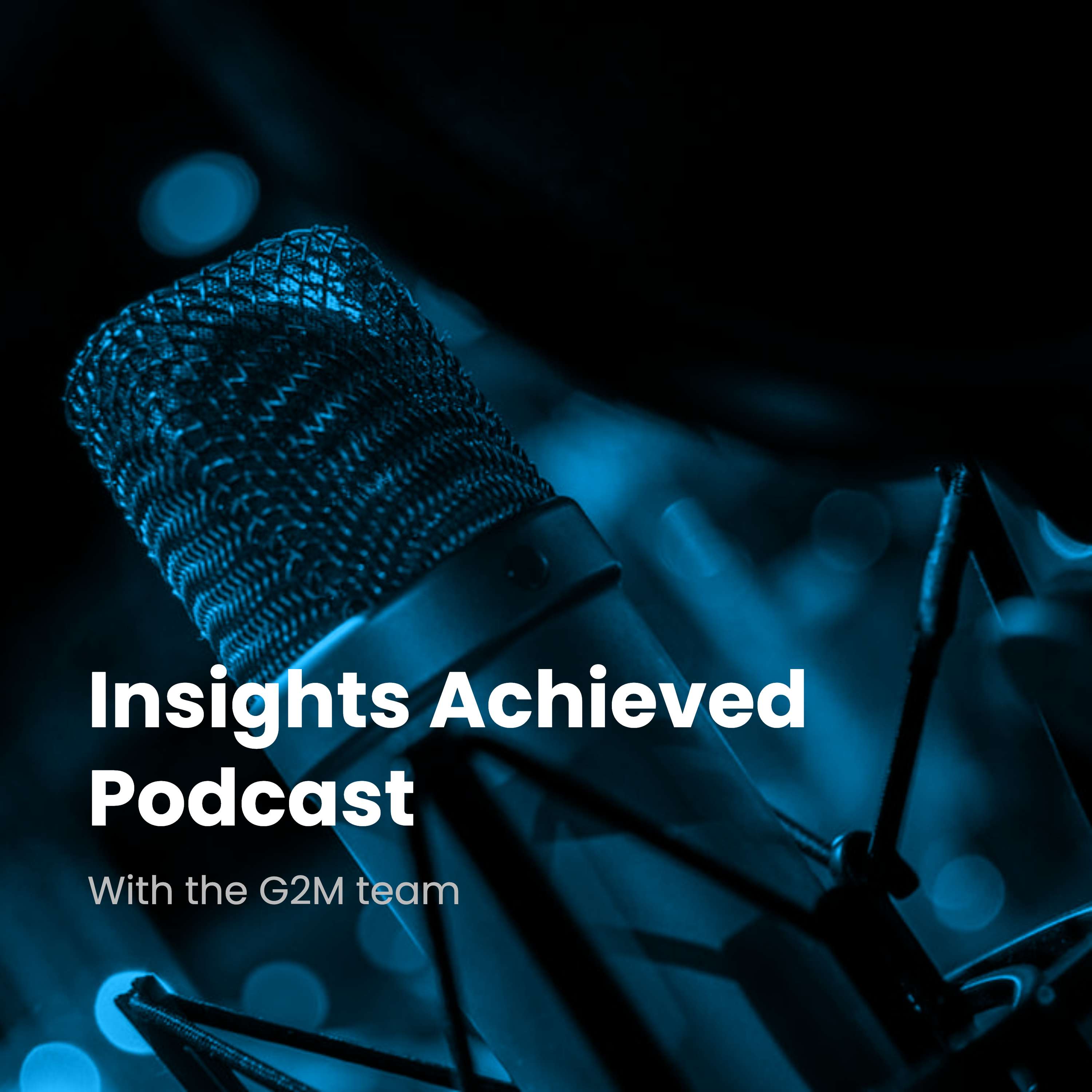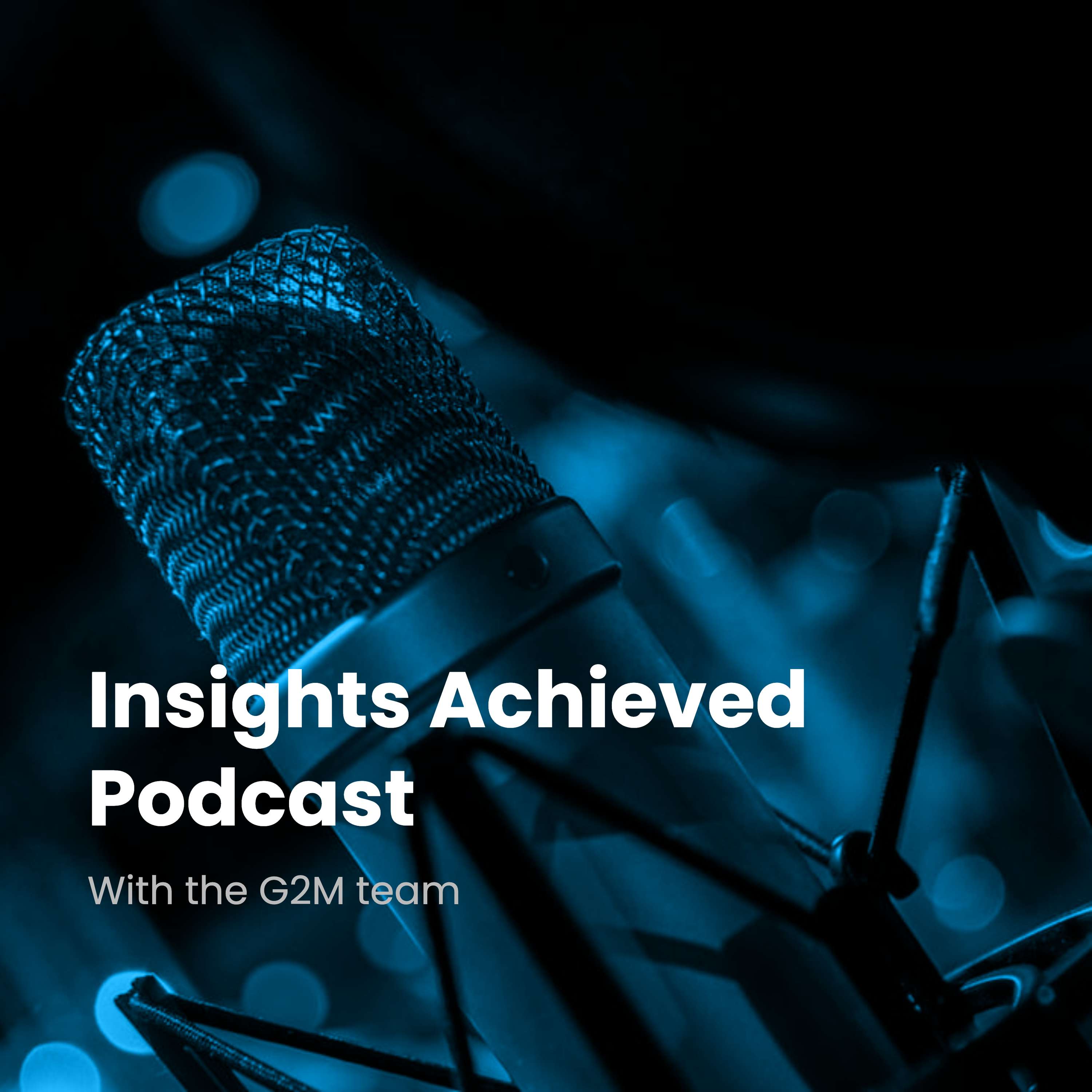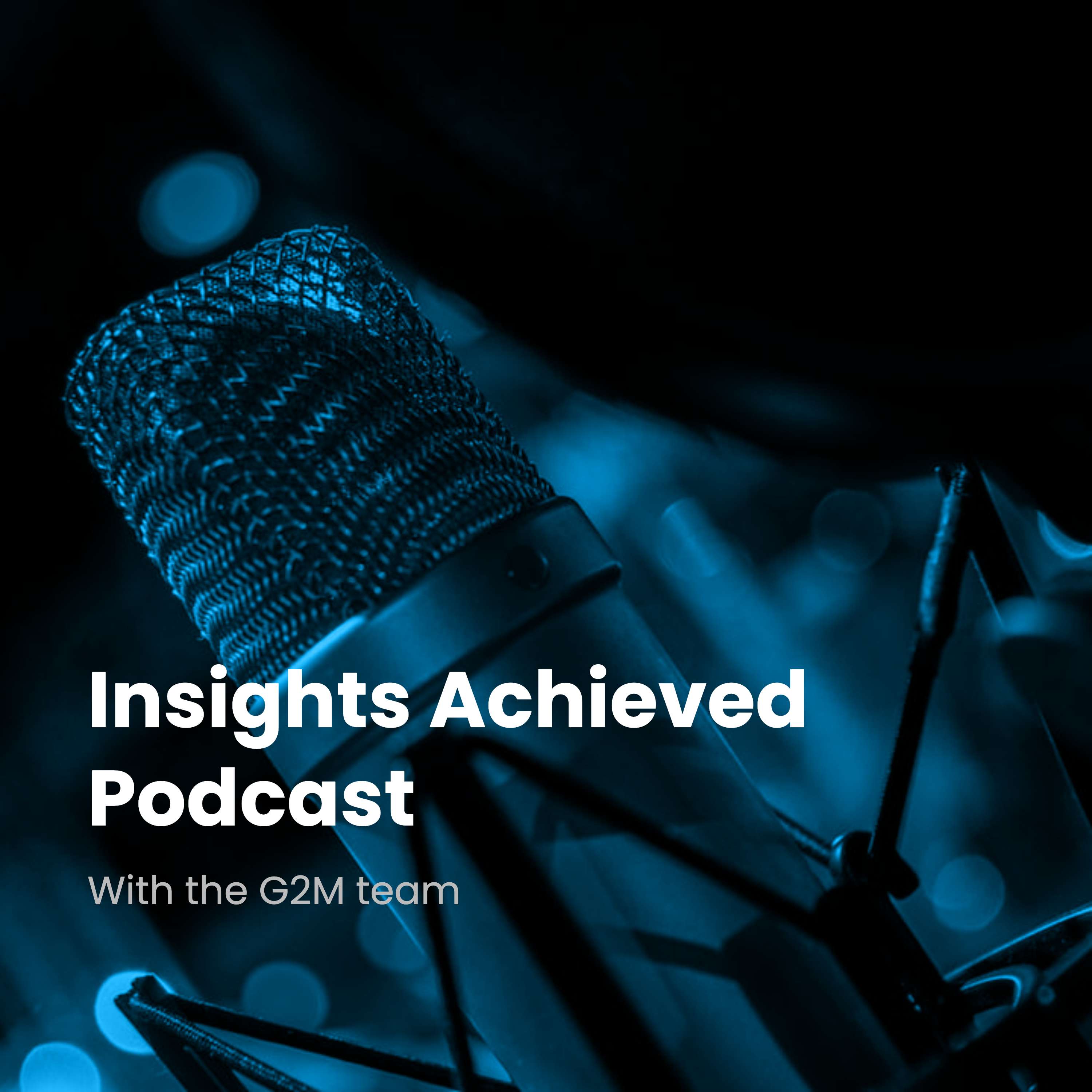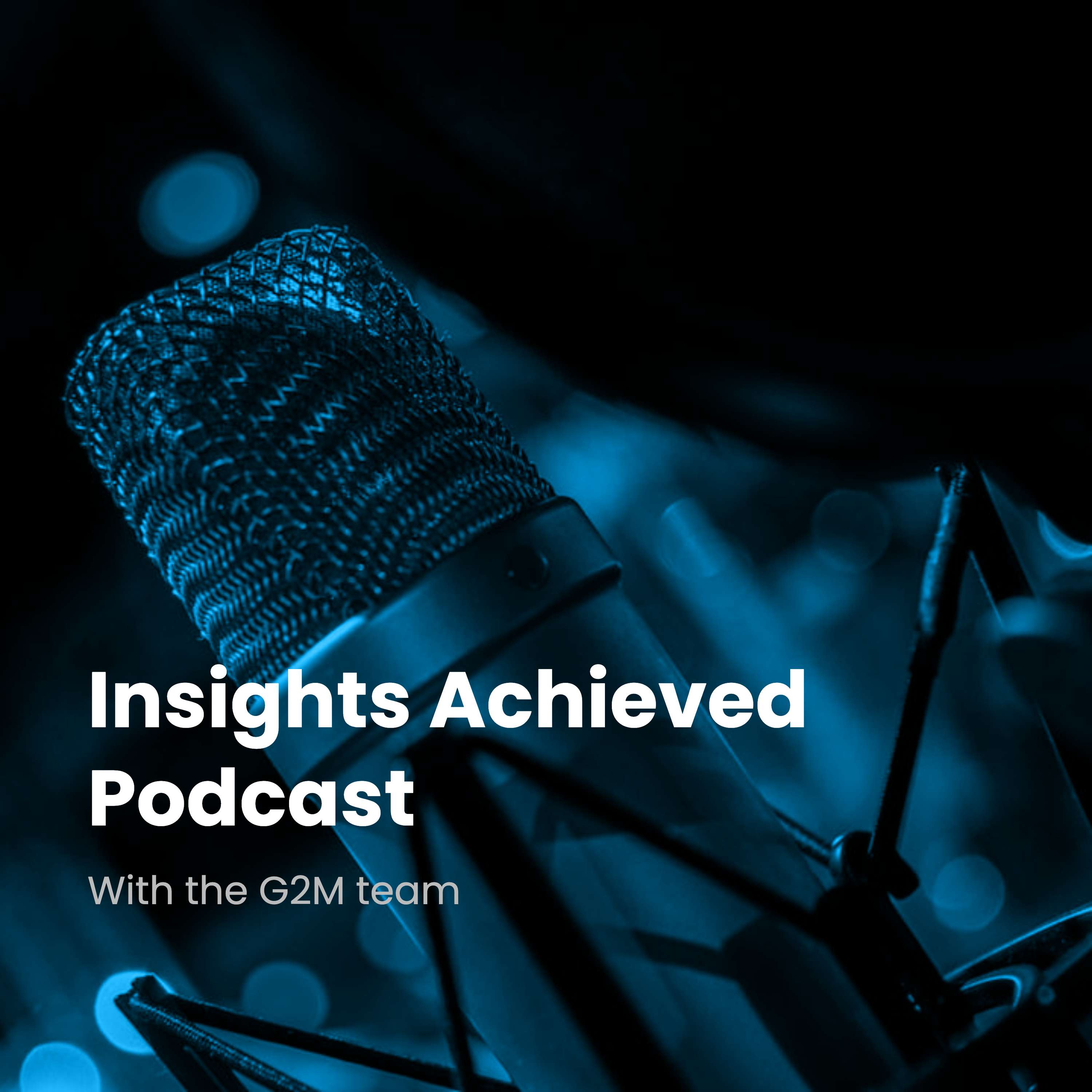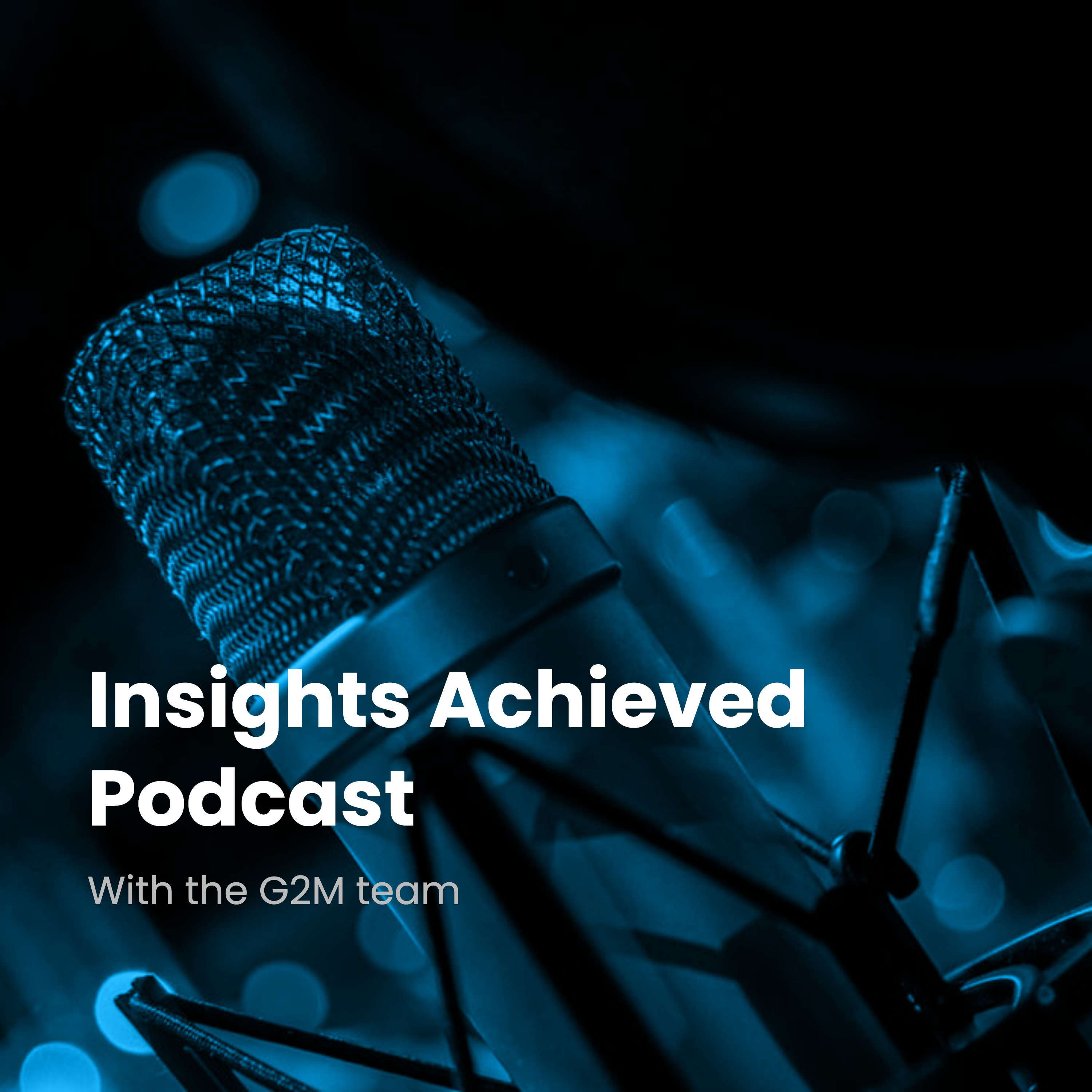Episode Transcript
[00:00:00] Speaker A: All right, so let's. Let's jump into this idea of model drift.
[00:00:03] Speaker B: Okay.
[00:00:04] Speaker A: You've probably heard of it.
[00:00:05] Speaker B: Yes, definitely. It's a. It's a. It's kind of a hidden challenge in AI. Especially for sales and marketing.
[00:00:11] Speaker A: Yeah, especially for sales and marketing. Like, if you're not careful, this can really mess things up.
[00:00:16] Speaker B: Yeah. It can really trip you up if you're not paying attention to it.
[00:00:19] Speaker A: Yeah, for sure. You've invested in AI, right? You're trying to get all these great insights.
[00:00:24] Speaker B: Yeah. But just like any high performance tool. Yeah. AI needs regular tune ups.
[00:00:30] Speaker A: Tune ups?
[00:00:31] Speaker B: Yeah. You know, imagine you're relying on outdated maps to navigate a city.
[00:00:37] Speaker A: Okay.
[00:00:37] Speaker B: That's constantly changing. You would miss all the new routes and you'd probably end up lost. Oh, yeah, and that's model drift in a nutshell.
[00:00:45] Speaker A: Right.
[00:00:45] Speaker B: Your AI is making decisions based on information that's no longer relevant.
[00:00:49] Speaker A: Okay. I love that analogy. The outdated maps.
[00:00:52] Speaker B: Yeah.
[00:00:53] Speaker A: So, but let's break it down even more.
[00:00:55] Speaker B: Sure.
[00:00:55] Speaker A: What exactly is model drift? What are we talking about here?
[00:00:58] Speaker B: So model drift happens when the data your AI was initially trained on no longer reflects the current reality. Think back to 2022. Okay. Your customer base, their preferences, the entire market. It's all shifted for sure, hasn't it?
[00:01:15] Speaker A: Big time.
[00:01:16] Speaker B: And that shift creates a gap between what your AI knows and what's actually happening out there. Which leads to potentially skewed insights.
[00:01:25] Speaker A: So the AI doesn't stop working.
[00:01:27] Speaker B: Right.
[00:01:28] Speaker A: It's just working with bad info.
[00:01:30] Speaker B: Exactly.
[00:01:31] Speaker A: And that can lead to bad decisions.
[00:01:32] Speaker B: Yes, definitely.
[00:01:33] Speaker A: Okay, so how does this drift actually manifest?
[00:01:36] Speaker B: So this drift can manifest in a couple of ways.
[00:01:39] Speaker A: Okay.
[00:01:39] Speaker B: The first is what we call data drift. Think of it as the ingredients of your AI model changing. Maybe your customer demographics have shifted or their buying habits are different now.
[00:01:49] Speaker A: So the data feeding the AI isn't accurate anymore.
[00:01:52] Speaker B: Exactly. It's no longer a true reflection of what's happening in the market.
[00:01:56] Speaker A: Got it.
[00:01:56] Speaker B: And if those changes are drastic enough, your model will start making predictions based on a reality that no longer exists. Like imagine your model was trained on pre pandemic data.
[00:02:07] Speaker A: Okay.
[00:02:07] Speaker B: It might still recommend travel packages as a top seller.
[00:02:10] Speaker A: Okay.
[00:02:11] Speaker B: But now everyone's focused on home renovations, Right? You'd be wasting marketing dollars.
[00:02:15] Speaker A: Yeah. You'd be missing the boat completely, missing.
[00:02:17] Speaker B: Out on a key trend.
[00:02:19] Speaker A: Yeah, that's. That's a bad situation.
[00:02:21] Speaker B: Yeah. That's a painful example of how ignoring data drift can backfire.
[00:02:26] Speaker A: For sure. And you mentioned there's this second type of Drift?
[00:02:29] Speaker B: Yes.
[00:02:29] Speaker A: Concept drift.
[00:02:30] Speaker B: Concept drift, what is that? Concept drift is a bit trickier because it's not just the data points themselves changing.
[00:02:37] Speaker A: Okay.
[00:02:37] Speaker B: It's the underlying relationships between those data points and the outcomes that you're interested in.
[00:02:43] Speaker A: Okay.
[00:02:43] Speaker B: So let's say, for example, your AI learned that certain online behaviors strongly predict a customer buying a luxury car.
[00:02:51] Speaker A: Okay.
[00:02:51] Speaker B: But then maybe there's an economic downturn or a shift in consumer values.
[00:02:56] Speaker A: Okay.
[00:02:57] Speaker B: Suddenly those behaviors are no longer reliable predictors.
[00:03:00] Speaker A: So the rules of the game have changed.
[00:03:02] Speaker B: Exactly.
[00:03:03] Speaker A: But the AI is still playing with the old rulebook.
[00:03:05] Speaker B: That's a great way to put it. And these concept drifts can be really sneaky.
[00:03:09] Speaker A: Yeah, I bet.
[00:03:10] Speaker B: Especially when they're tied to things like economic trends or changes in consumer confidence. Factors that are really hard to capture in beta.
[00:03:17] Speaker A: So we've got these two types of drift.
[00:03:19] Speaker B: Right.
[00:03:19] Speaker A: And they can really throw our AI off track.
[00:03:22] Speaker B: Yeah.
[00:03:22] Speaker A: How do we know when it's happening, though? Are there any warning signs?
[00:03:26] Speaker B: Absolutely. There are red flags.
[00:03:27] Speaker A: Okay. Let's hear them.
[00:03:28] Speaker B: That sales and marketing teams should look out for.
[00:03:31] Speaker A: Okay.
[00:03:32] Speaker B: For sure. One of the simplest is to just keep an eye on your AI's performance metrics.
[00:03:38] Speaker A: Okay.
[00:03:39] Speaker B: Think of it like checking the gauges on your car's dashboard. For models that predict things like customer churn or likelihood to buy, we look at what's called the F1 score, which basically measures how accurate those predictions are.
[00:03:53] Speaker A: So that tells us how good our AI is at hitting the bullseye.
[00:03:57] Speaker B: Precisely. And for cluster based models, which are often used for segmentation, the key metric is what's called the silhouette score. It basically tells you how well defined your customer groups are. Are they truly distinct or are they blurring together?
[00:04:12] Speaker A: Okay, so those are our gauges. Yeah, those are the things we're looking at. But how do we know what's good and what's bad?
[00:04:19] Speaker B: That's where establishing a baseline comes in.
[00:04:21] Speaker A: Okay.
[00:04:22] Speaker B: When your AI model is first deployed and it's performing well, you record those initial F1 and silhouette scores.
[00:04:29] Speaker A: Okay.
[00:04:29] Speaker B: Those become your benchmarks. Then as time goes on, you compare the current scores to those baselines.
[00:04:35] Speaker A: Got it.
[00:04:35] Speaker B: If you see significant deviations, that's a signal that drift might be happening.
[00:04:39] Speaker A: So we're setting the standard for our AI when it's at its best.
[00:04:43] Speaker B: Right.
[00:04:43] Speaker A: And then we're looking for anything that deviates from the that.
[00:04:46] Speaker B: Exactly. And tools like G2M Insights actually have built in monitoring systems.
[00:04:51] Speaker A: Oh, wow. Okay.
[00:04:52] Speaker B: That automatically track these performance metrics for you. One technique that's particularly useful for those prediction models is something called confidence Based Performance Estimation.
[00:05:04] Speaker A: Okay.
[00:05:04] Speaker B: CBPE for sure.
[00:05:06] Speaker A: Cbpe. What is that?
[00:05:07] Speaker B: Well, in sales and marketing, you don't always know the outcome of your efforts right away.
[00:05:11] Speaker A: Right. This takes time.
[00:05:13] Speaker B: Exactly. A sales cycle can take months.
[00:05:15] Speaker A: Totally.
[00:05:16] Speaker B: So you don't have that immediate ground truth to see if your AI's predictions were accurate.
[00:05:20] Speaker A: Right.
[00:05:21] Speaker B: But CBPE is clever because it analyzes both the AI's prediction.
[00:05:25] Speaker A: Nope.
[00:05:26] Speaker B: And the level of confidence the AI has in that prediction.
[00:05:29] Speaker A: So if the AI is kind of waffling.
[00:05:30] Speaker B: Yeah.
[00:05:31] Speaker A: If it's like that's a sign that something's wrong.
[00:05:33] Speaker B: Exactly. It's like the AI is raising a little flag saying, hey, I'm not so sure about this anymore. You might want to double check me.
[00:05:40] Speaker A: Right.
[00:05:40] Speaker B: By tracking these confidence levels over time, you can get a much faster read on how well your model is actually performing even before the final sales data rolls in.
[00:05:50] Speaker A: So it gives us more time to react.
[00:05:52] Speaker B: Exactly.
[00:05:53] Speaker A: And maybe prevent some of those bad decisions.
[00:05:55] Speaker B: Exactly. It can help prevent drift from causing serious damage.
[00:05:59] Speaker A: So G2M is automating all of this?
[00:06:01] Speaker B: It does. Their system constantly compares the estimated performance of your models.
[00:06:07] Speaker A: Okay.
[00:06:07] Speaker B: To the baseline that you set initially. If things start to deviate too much, you get an alert.
[00:06:12] Speaker A: So it's like an early warning system.
[00:06:14] Speaker B: Exactly. Like an early warning system for model drift.
[00:06:17] Speaker A: Very cool. Okay, so we've been talking about these prediction models.
[00:06:21] Speaker B: Right.
[00:06:22] Speaker A: But what about those regression models.
[00:06:24] Speaker B: Yeah.
[00:06:24] Speaker A: That are used to forecast things like revenue.
[00:06:27] Speaker B: Right. Customer lifetime value.
[00:06:29] Speaker A: How do we. How do we monitor those for drift?
[00:06:31] Speaker B: So G2M uses a slightly different approach for regression models.
[00:06:35] Speaker A: Okay.
[00:06:35] Speaker B: It's called direct loss estimation, or dle.
It's a bit more technical.
[00:06:40] Speaker A: Oh, yeah.
[00:06:40] Speaker B: But the core idea is similar to cbp. It's trying to estimate how well the model is performing even before you have all the final data.
[00:06:50] Speaker A: Got it. So is it looking at confidence levels too?
[00:06:52] Speaker B: Not exactly. DLE works by training a second AI model to predict the errors of the first model.
[00:06:59] Speaker A: So a model monitoring another model.
[00:07:02] Speaker B: Precisely. Like having an independent auditor double checking the books.
[00:07:06] Speaker A: I like it.
[00:07:06] Speaker B: And by tracking the errors predicted by the second model, you can get a good sense of whether the first model is starting to drift.
[00:07:14] Speaker A: Okay.
[00:07:15] Speaker B: And make inaccurate forecasts.
[00:07:16] Speaker A: So this is all making sense.
[00:07:18] Speaker B: Good.
[00:07:18] Speaker A: But I'm realizing that monitoring is only part of the equation.
[00:07:23] Speaker B: Right.
[00:07:23] Speaker A: Even with all this fancy stuff, our models are going to drift at some point.
[00:07:27] Speaker B: Inevitably. Yeah.
[00:07:29] Speaker A: So what happens then?
[00:07:30] Speaker B: That's where retraining comes in.
[00:07:32] Speaker A: Okay.
[00:07:32] Speaker B: It's essentially giving your AI a refresh, a chance to kind of catch up with the current reality.
[00:07:38] Speaker A: So we're feeding it all the new data.
[00:07:39] Speaker B: Exactly.
[00:07:40] Speaker A: And it can learn and adapt.
[00:07:41] Speaker B: Yeah. Think of it as sending your AR back to school to learn the newest trends and patterns.
[00:07:46] Speaker A: Back to school.
[00:07:47] Speaker B: Yeah. And retraining can be as simple as just updating the data the model is using. Okay. Or it might involve tweaking the model's parameters.
[00:07:55] Speaker A: Right.
[00:07:55] Speaker B: Or even completely rebuilding it from scratch.
[00:07:58] Speaker A: Okay. So that sounds like it could get a little complicated. Especially for busy sales and marketing teams.
[00:08:02] Speaker B: Yeah.
[00:08:03] Speaker A: Is this something that we can handle ourselves or are we calling in, like, the data science experts?
[00:08:08] Speaker B: It really depends on the complexity of your AI model and the resources that you have available.
[00:08:13] Speaker A: Okay.
[00:08:14] Speaker B: But the good news is platforms like G2M.
[00:08:16] Speaker A: Yeah.
[00:08:17] Speaker B: Offer tools that allow business users to retrain models without needing to write any code.
[00:08:24] Speaker A: No code. That's great.
[00:08:25] Speaker B: It's very intuitive. Drag and drop stuff.
[00:08:27] Speaker A: Okay. Awesome. So that really empowers sales and marketing teams.
[00:08:31] Speaker B: Yes.
[00:08:31] Speaker A: To kind of take ownership of this.
[00:08:33] Speaker B: Absolutely.
[00:08:34] Speaker A: But I'm also guessing that there are times where you do need to call in those experts.
[00:08:39] Speaker B: Definitely. If you're dealing with a highly complex model.
[00:08:42] Speaker A: Right.
[00:08:42] Speaker B: Or if you're seeing drift that you just can't seem to fix. It's always wise to consult with beta science experts.
[00:08:49] Speaker A: Makes sense.
[00:08:49] Speaker B: They can help you diagnose the problem.
[00:08:52] Speaker A: Right.
[00:08:52] Speaker B: Fine tune your models and make sure you're getting the most out of your AI investment.
[00:08:56] Speaker A: Okay. So we've talked about monitoring for drift.
[00:08:59] Speaker B: Right.
[00:08:59] Speaker A: We've talked about retraining our models.
[00:09:02] Speaker B: How do we know when to retrain?
[00:09:03] Speaker A: That's where those baseline performance metrics we talked about earlier come in. Remember those initial F1 and silhouette scores?
[00:09:10] Speaker B: Yeah.
[00:09:11] Speaker A: Set the standard for your AI's peak performance.
[00:09:14] Speaker B: Right. Right.
[00:09:15] Speaker A: If you start to see your current scores dropping significantly below those baselines.
[00:09:19] Speaker B: Yeah.
[00:09:19] Speaker A: That's a clear sign it's time to retrain.
[00:09:22] Speaker B: So it's like if your top salesperson starts missing their quotas.
[00:09:26] Speaker A: Exactly.
[00:09:27] Speaker B: You know something's up.
[00:09:29] Speaker A: Something's wrong. Yeah.
[00:09:29] Speaker B: You gotta investigate.
[00:09:31] Speaker A: You need to figure out what's going on.
[00:09:32] Speaker B: And G2M has those alerts built in.
[00:09:34] Speaker A: Exactly. Their system will automatically notify you.
[00:09:37] Speaker B: Okay.
[00:09:38] Speaker A: When your model's performance deviates significantly from the baseline.
[00:09:42] Speaker B: So it takes the guesswork out of it.
[00:09:44] Speaker A: It does. It lets you focus on what matters most.
[00:09:46] Speaker B: Right.
[00:09:47] Speaker A: Using those AI insights to drive better sales and marketing strategies.
[00:09:51] Speaker B: So just to recap here.
[00:09:52] Speaker A: Yeah.
[00:09:53] Speaker B: Model Drift. It's kind of this under the surface thing.
[00:09:57] Speaker A: Yeah.
[00:09:57] Speaker B: It's a hidden challenge that can really mess up your AI if you're not.
[00:10:01] Speaker A: Paying attention, if you're not careful. But we've talked about how to monitor for it.
[00:10:04] Speaker B: Right.
[00:10:05] Speaker A: How to retrain those models when it happens. Keep your AI sharp.
[00:10:10] Speaker B: Keep it performing at its best.
[00:10:12] Speaker A: Make sure it's giving you good info.
[00:10:14] Speaker B: Absolutely. The most accurate and reliable insights.
[00:10:18] Speaker A: Exactly. And for those of you who want to dive even deeper.
[00:10:21] Speaker B: Yeah.
[00:10:22] Speaker A: Into model Drift and see what G2M can do.
[00:10:25] Speaker B: Yeah. We've included a link to a free trial in the show notes.
[00:10:28] Speaker A: Okay. Awesome. So before we wrap up, I want to leave you with one last thought.
[00:10:31] Speaker B: Okay.
[00:10:32] Speaker A: Imagine two companies, right. Both using AI.
[00:10:37] Speaker B: Okay.
[00:10:37] Speaker A: Both competing for the same customers. One of them, they set up their AI and they just kind of let it run. The other company, they're monitoring for Drift.
[00:10:46] Speaker B: Right.
[00:10:47] Speaker A: They're retraining their models.
[00:10:48] Speaker B: They're staying on top of the.
[00:10:49] Speaker A: They're incorporating that human expertise.
[00:10:51] Speaker B: Absolutely.
[00:10:52] Speaker A: Who do you think is going to win?
[00:10:53] Speaker B: Who's going to have the edge?
[00:10:54] Speaker A: He's going to be more agile.
[00:10:55] Speaker B: Yeah. Who's going to be more responsive to changes in the market? More successful and ultimately more successful.
[00:11:02] Speaker A: Yeah. I think the answer is pretty clear. It is managing model Drift. It's not just a technical necessity.
[00:11:08] Speaker B: Right.
[00:11:08] Speaker A: It's a strategic advantage.
[00:11:10] Speaker B: It's what separates those who simply use AI from those who truly master it.
[00:11:15] Speaker A: Very well said.
[00:11:16] Speaker B: Thank you.
[00:11:17] Speaker A: So keep learning. Keep experimenting and keep pushing those boundaries.
[00:11:20] Speaker B: Yeah. Keep pushing the boundaries of what's possible with AI in sales and marketing.
[00:11:26] Speaker A: That's it for the deep dive.
[00:11:27] Speaker B: Thanks for joining us.
[00:11:29] Speaker A: We'll see you next time.
 In this episode of the Insights Achieved Podcast, we explore how sales and marketing leaders can ensure their machine learning models continue to deliver valuable and accurate insights over time. Based on our G2M blog, we unpack the concept of model drift, its potential to disrupt campaigns, and actionable strategies to monitor and maintain model performance. Learn how to keep your AI tools aligned with your goals to drive smarter decisions and better results. Perfect for executives focused on maximizing their AI investments. This podcast episode was generated using AI combined with original ideas and content from the G2M […]
In this episode of the Insights Achieved Podcast, we explore how sales and marketing leaders can ensure their machine learning models continue to deliver valuable and accurate insights over time. Based on our G2M blog, we unpack the concept of model drift, its potential to disrupt campaigns, and actionable strategies to monitor and maintain model performance. Learn how to keep your AI tools aligned with your goals to drive smarter decisions and better results. Perfect for executives focused on maximizing their AI investments. This podcast episode was generated using AI combined with original ideas and content from the G2M […]
